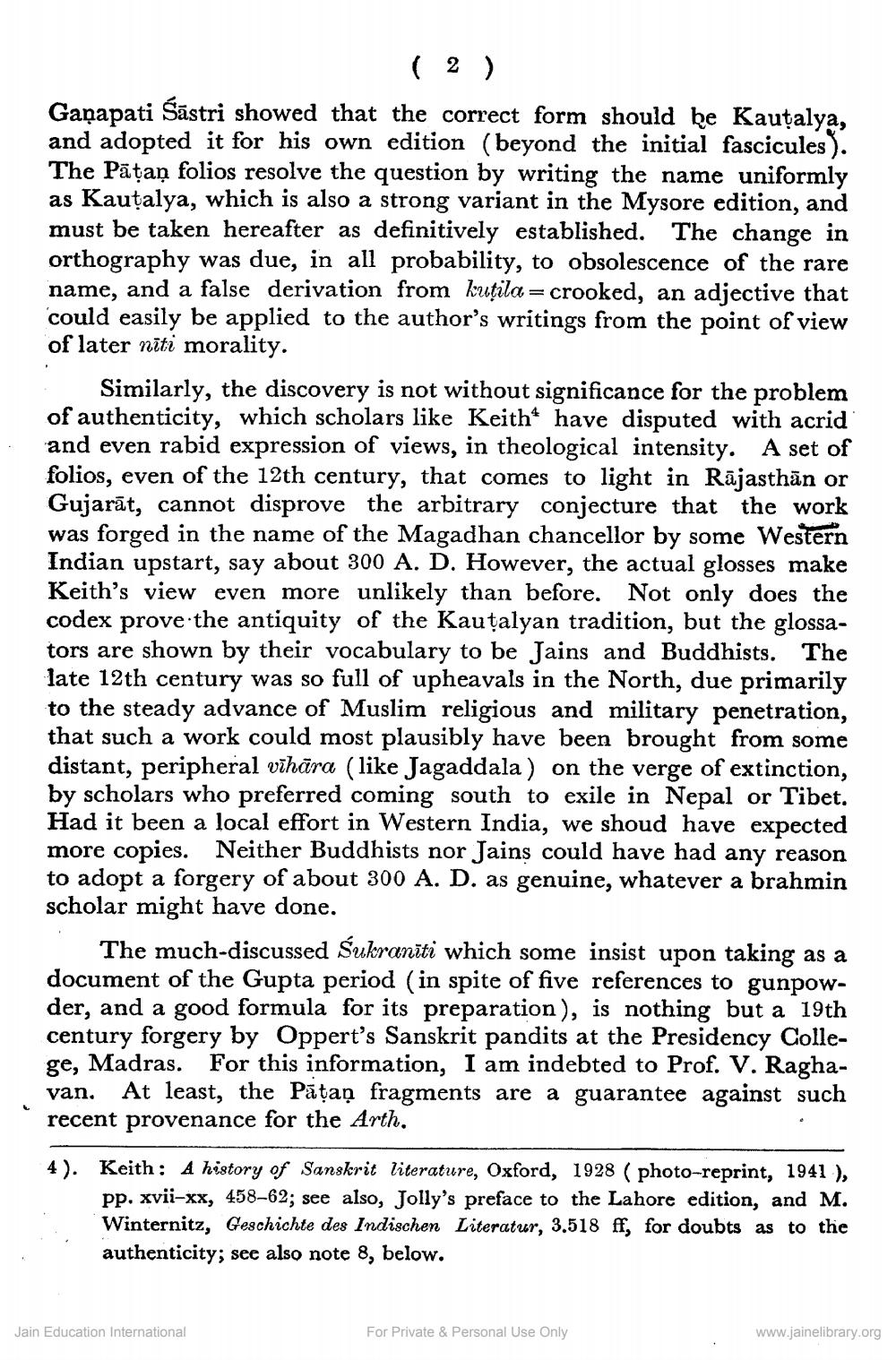________________
し
( 2 )
Ganapati Sastri showed that the correct form should be Kauṭalya, and adopted it for his own edition (beyond the initial fascicules). The Paṭan folios resolve the question by writing the name uniformly as Kauṭalya, which is also a strong variant in the Mysore edition, and must be taken hereafter as definitively established. The change in orthography was due, in all probability, to obsolescence of the rare name, and a false derivation from kutila = crooked, an adjective that could easily be applied to the author's writings from the point of view of later niti morality.
Similarly, the discovery is not without significance for the problem of authenticity, which scholars like Keith have disputed with acrid and even rabid expression of views, in theological intensity. A set of folios, even of the 12th century, that comes to light in Rajasthan or Gujarat, cannot disprove the arbitrary conjecture that the work was forged in the name of the Magadhan chancellor by some Western Indian upstart, say about 300 A. D. However, the actual glosses make Keith's view even more unlikely than before. Not only does the codex prove the antiquity of the Kauṭalyan tradition, but the glossators are shown by their vocabulary to be Jains and Buddhists. The late 12th century was so full of upheavals in the North, due primarily to the steady advance of Muslim religious and military penetration, that such a work could most plausibly have been brought from some distant, peripheral vihara (like Jagaddala) on the verge of extinction, by scholars who preferred coming south to exile in Nepal or Tibet. Had it been a local effort in Western India, we shoud have expected more copies. Neither Buddhists nor Jains could have had any reason to adopt a forgery of about 300 A. D. as genuine, whatever a brahmin scholar might have done.
The much-discussed Sukraniti which some insist upon taking as a document of the Gupta period (in spite of five references to gunpowder, and a good formula for its preparation), is nothing but a 19th century forgery by Oppert's Sanskrit pandits at the Presidency College, Madras. For this information, I am indebted to Prof. V. Raghavan. At least, the Patan fragments are a guarantee against such recent provenance for the Arth.
4). Keith: A history of Sanskrit literature, Oxford, 1928 ( photo-reprint, 1941), pp. xvii-xx, 458-62; see also, Jolly's preface to the Lahore edition, and M. Winternitz, Geschichte des Indischen Literatur, 3.518 ff, for doubts as to the authenticity; see also note 8, below.
Jain Education International
For Private & Personal Use Only
www.jainelibrary.org




